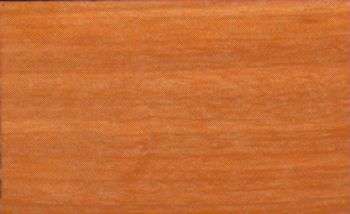
Anchico colorado (Piptadenia rigida)
Family: Mimosaceae
Common names: Anchico colorado, Angico, Angico amarelo, Angico do banhado, Angico preto rajado, Angico rojo, Angico rosa, Angico roxo, Angico verdadeiro, Angico vermelho, Angico vermellio, Cobi, Curupayra, Cutuba, Espinho roxo, Hediondo, Parica branca, Parica da terra firme, Parica rana, Paricachi, Pau secante, Queenwood, Red angico, Timbauba, Timbo da matta, Timbo rana
Distributed in: Argentina, Brazil, Colombia, Papua New Guinea (Latin America, Oceania and S.E. Asia)
Common uses: Boat building (general), Boat building: framing, Cabinetmaking, Flooring, Fuelwood, Furniture, Handles: general, Heavy construction, Joinery, Ladders, Light construction, Mine timbers, Plywood, Posts, Railroad ties, Sporting Goods, Structural work, Tool handles, Turnery, Vehicle parts
Tree size: Trunk diameter is 100-150 cm
Colors: the heart isRed, Reddish brownand the sapwoodWhite to yellow, Yellow.The grain isStraight, the textureUniformand the lusterLustrous
Natural durability: Susceptible to attack from powder post (Lyctid & Bostrychid) beetles, Susceptible to insect attack
Kiln Schedules: Dry at a slow speed
Drying Defects: Collapse, Distortion
Ease of Drying: Moderately Difficult to Difficult
Tree Identification: Bole/stem form is straight
Comments: General finishing qualities are rated as good
Blunting Effect: Little
Boring: Fairly easy to very easy
Carving: Fairly Easy to Very Easy
Cutting Resistance: Easy to saw
Mortising: Fairly Easy to Very Easy
Moulding: Fairly Easy to Very Easy
Movement in Service: Fairly Easy to Very Easy
Nailing: Possible if prebored, Pre-Boring Recommended
Planing: Fairly Easy to Very Easy
Resistance to Impregnation: Resistant sapwood
Response to hand tools: Responds Readily
Routing recessing: Fairly Easy to Very Easy
Sanding: Fairly Easy to Very Easy
Screwing: Possible if prebored, Pre-boring recommended; Turning: Very Good to Excellent Results
Polishing: Good;
- Numerical data Metric
- Numerical data English
- Strength properties
- References
 |
 |
 |
 |
| Item |
Green |
Dry |
Metric |
| Specific Gravity |
|
|
|
| Density |
|
849 |
kg/m3 |
| Bending Strength |
686 |
1070 |
kg/cm2 |
| Crushing Strength |
380 |
574 |
kg/cm2 |
| Hardness |
|
1144 |
kg |
| Impact Strength |
|
|
cm |
| Shearing Strength |
|
177 |
kg/cm2 |
| Stiffness |
117 |
136 |
1000 kg/cm2 |
| Tangential Shrinkage |
|
|
% |
| Radial Shrinkage |
4 |
|
% |
| Weight |
833 |
721 |
kg/m3 |
| Maximum Load |
|
|
cm-kg/cm3 |
| Toughness |
|
|
cm-kg |
| Static Bending |
|
|
kg/cm2 |
|
 |  |  |  | | Item | Green | Dry | English | | Bending Strength | 9768 | 15223 | psi | | Density | | 53 | lbs/ft3 | | Hardness | | 2524 | lbs | | Maximum Crushing Strength | 5408 | 8171 | psi | | Shearing Strength | | 2527 | psi | | Stiffness | 1675 | 1936 | 1000 psi | | Weight | 52 | 45 | lbs/ft3 | | Radial Shrinkage | 4 | | % | | Tangential Shrinkage | 8 | | % | |
Bending strength (MOR) = medium 0
Max. crushing strength = medium
Max. crushing strength = high
Density (dry weight) = 61-67 lbs/cu. ft
Density (dry weight) = 53-60 lbs/cu. ft
Shrinkage, Tangential = fairly large
Shrinkage, Radial = small
Shearing strength (parallel to grain) = high
Modulus of Elasticity (stiffness) = high
Density (dry weight) = 46-52 lbs/cu. ft.
Shrinkage, Tangential = large
Shrinkage, Radial = fairly large
Bending strength (MOR) = high
Shrinkage, Tangential = small
Shrinkage, Radial = very small
Shrinkage, Radial = large
Shearing strength (parallel to grain) = low
Modulus of Elasticity (stiffness) = very low
Modulus of Elasticity (stiffness) = medium
Hardness (side grain) = hard
Density (dry weight) = 67-75 lbs/cu.ft
Bending strength (MOR) = low
Shrinkage, Tangential = moderate
Shrinkage, Radial = moderate
Shearing strength (parallel to grain) = very high
Modulus of Elasticity (stiffness) = low
Hardness (side grain) = very hard
Berni, C.A., Bolza, E., Christensen, F.J.,1979,South American Timbers - The Characteristics, Properties and Uses of 190,Species,C.S.I.R.O Div. Building ResearchFalla Ramirez, A.,1971,Resultados de Estudios Fisico-Mechanicos de Algunas Maderas de la Serrania,de San Lucas. (Some timbers of the San Lucas mountain range.,Plegable Divulgativo, Div. Forestal, Inderena Colombia,pp6Hoheisel, H.,1968,Identification of some Colombian wood Sp. and their possible use on the,basis of physical and mechanical properties,Latin American Forest Research and Training Institute, Merida VenezualaMainieri, C., Pereira, J.A.,1965,Madeiras do Brasil,Anuario Brasileiro de Economia Florestal,17(17,PP135-416Mainieri, C.,1978,Fichas de Caracteristicas das Madeiras Brasileiras,Inst. Pesquisas TechnologicasMcElwee et al, R.L., Isenberg (revised by M.L. Harder & L. Lounden, I.H.,1956,Estudio Fisico y Mecanico de las Especies Forestales del Genero,'Piptadenia',Anales de la Admin. NAC. de Bosques Argentina,pp63-84Record, S.J., Hess, R.W.,1943,Timbers of the New World,Yale University PressRecord, S.J., Mell, C.D.,1924,Timbers of Tropical America,Yale Univ. PressRizzini, C.T.,1978,Arvores e Madeiras Uteis do Brasil: Manual de Dendrologia Brasileira,Editora Edgard Blucher LTDA BrazilSao Paulo - Instituto de Pesquisas Tecnologicas,1956,Tabelas de Resultados obtidos para Madeiras Nacionais,Inst. Pesq. Tec. Sao Paulo, Brazil Bol., No.31(2nd Ed.)Takahashi, A.,1975,Compilation of data on the Mechanical Properties of Foreign Woods (Part 2,Central and South America,Shimane University, Japan, Research Report on Foreign Wood No.4Timber Development Association Ltd.,1955,World Timbers (3 Vols.,Timber Development Association Ltd.Tortorelli, L.,1956,Maderas y Bosques Argentinos,Editorial Acme S.A.C.I. Buenos AiresTropical Woods,1968,Madeiras Comercias Brasileiras,Inst. Pesq. Tec. Sao Paulo Brazil Publ.,857
|








